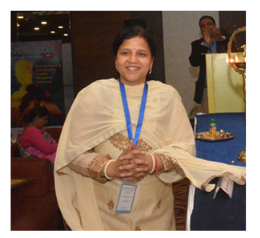Scholars Webinar on
Cardiology
THEME: "Innovations in the treatment of Cardiac Disease"
 14-15 Apr 2021
14-15 Apr 2021  Online| Webinar | 11:00-17:00 GMT
Online| Webinar | 11:00-17:00 GMT THEME: "Innovations in the treatment of Cardiac Disease"
 14-15 Apr 2021
14-15 Apr 2021  Online| Webinar | 11:00-17:00 GMT
Online| Webinar | 11:00-17:00 GMT 
Panacea Institute of Interdisciplinary Research and Education , India
Title: Novel Secondary Preventive Strategies after Acute Coronary Syndrome
Doctor Pallavi Mishra is a
medical graduate from Allahabad medical university. She has done her
post-graduation from King George Medical University which is among the top
three medical universities in the country. Her area of interest is preventive
cardiology, cardiovascular disease & Diabetes, Cardiac imaging, woman
cardiology, and Heart failure. She is a program coordinator in the
cardio-diabetes self-management and education program. She is Faculty and Head
Department of Cardiology in Panacea Institute of Interdisciplinary Research and
Education (PIIRE), Varanasi. She is chairman of CARDIABCON society, a national
body of Cardio-diabetes and Renal Disease.
Cardiovascular disease is the major cause of death globally. Out of 17 million premature deaths, 37% are caused by CVDs. Acute Coronary Syndrome (ACS) is a term used to describe a range of conditions associated with suddenly reduced blood flow to the heart. This presentation discusses various risk models with the acute coronary syndrome. Based on secondary research the presentation concludes that despite standard care treatment of post-ACS patients there is a mortality of around 20% means there is some residual cardiac risk that can be predicted by the GRACE registry and should be filled by a novel approach. This presentation further discusses various novel approaches like LDL and Lipoprotein A lowering, Triglyceride, Anti-inflammatory drugs, reduction of atherothrombosis by low dose Rivaroxaban and different blood-glucose-lowering approaches by GLP-1 RA & SGLT-2 inhibitors to fill the gap of residual cardiac risk. The LDL lowering approaches includes the utility of Ezetimibe and PCSK -9 inhibitors. The triglyceride reduction approach includes the use of high-dose eicosapentaenoic acid (EPA) in this subgroup of the patient. Furthermore, the Anti-inflammatory approach includes the use of canakinumab (CANTOS Trail) and Colchicine in a particular subgroup of patients. Recently the use of low dose Rivaroxaban has immersed as a novel approach to target the atherothrombosis in case of chronic stable coronary artery disease (COMPASS Trail). Finally, the miscellaneous approaches like SGLT-2 inhibitors and GLP-1 receptor agonist decrease the residual risk. The presentation also discusses the clinical outcome related to various agents and based on discussions of these approaches, the presentation suggests the key take-home point for clinicians. This presentation provides a complete overview of secondary prevention strategies after acute coronary syndrome, residual cardiac risk, different approaches, and various trials. The presentation will be immensely helpful for the clinician involved in the secondary prevention of acute coronary syndrome.